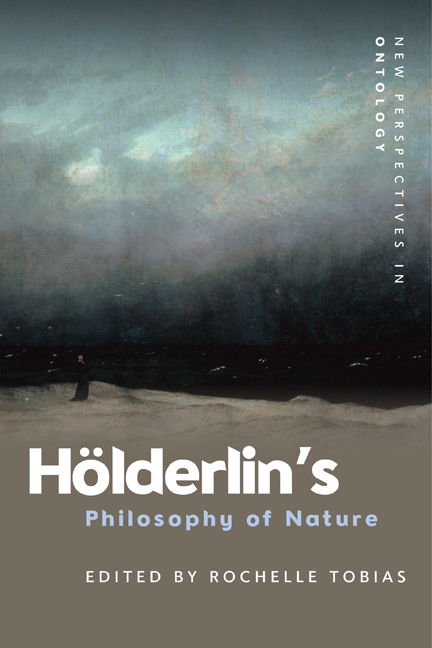1 - Introduction
Published online by Cambridge University Press: 08 October 2020
Summary
The essays in this volume chart the relation between Hölderlin's poetic theory and his concept of nature as developed in his poetry, prose and dramatic works. At the heart of his oeuvre lies an understanding of nature and the role that consciousness plays in it which responds to but also revises the concerns of eighteenth- and nineteenth-century philosophy of nature. The latter has seen a revival of interest in recent years given its implications for contemporary environmental thought and materialist approaches to culture and history. F. W. J. Schelling's suggestion that nature produces consciousness as part of its own process of self-realisation has served as a catalyst for claims that the material world has an agency all its own and is not merely an instrument of the subject's will. Echoes of this position can be heard in Hölderlin's writing, as in a fragment written between 1802 and 1803 where he asserts that in its original state nature appears weak since all powers are ‘justly and equally’ distributed in it and nothing takes precedence over anything else (FHA XIV, 303, my translation). Nothing, in other words, assumes the role of subject in this state in which nature has yet to be divided into discrete entities. In contrast to contemporary theorists, however, Hölderlin also declares that nature can reveal itself in its strength only when mediated by a sign that is itself empty. Poetry is necessary for nature not only to appear but also to be thought. This represents Hölderlin's contribution to the tradition of natural philosophy and to the theory and practice of the lyric.
As we approach the 250th anniversary of the poet's birth – Hölderlin was born in 1770 and died in 1843 – his work speaks with renewed vigour in its emphasis on the cycle of appearing and disappearing that would seem to be tailor made for an age of ecological crisis. Long before the concept of the Anthropocene was introduced, Hölderlin was well aware that human history could not be extricated from natural history for complicated reasons including the impulse toward formlessness inherent in nature.
- Type
- Chapter
- Information
- Hölderlin's Philosophy of Nature , pp. 1 - 20Publisher: Edinburgh University PressPrint publication year: 2020



